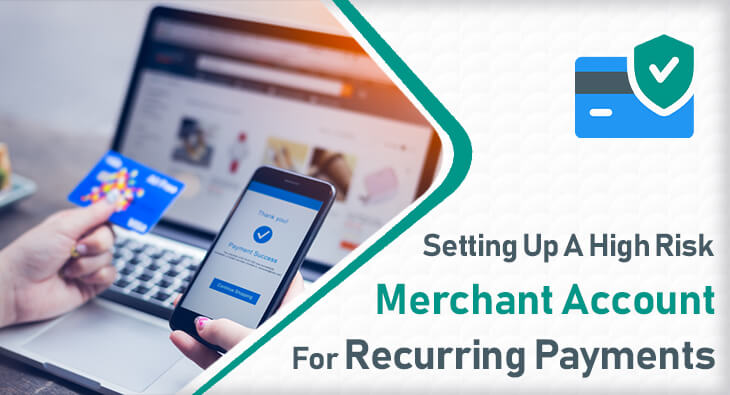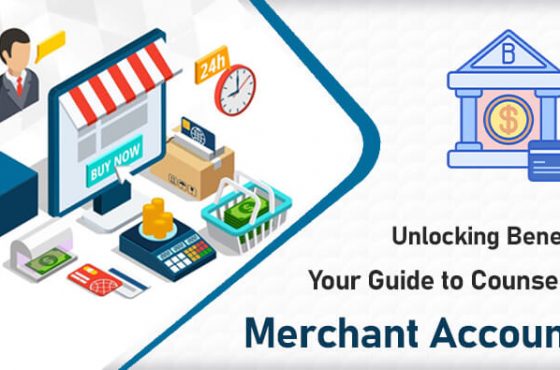Setting Up a High Risk Merchant Account for Recurring Payments
Navigating the world of online business transactions, especially for high-risk industries, can be like walking through a minefield if you’re not equipped with the right knowledge and tools. One essential component for sustaining cash flow and ensuring the longevity of businesses in these sectors is setting up a merchant account for recurring payments.
This necessity is even more pronounced for businesses classified as high risk due to their higher chances of chargebacks and fraud. This blog post aims to demystify the process of setting up a high-risk merchant account for recurring payments, ensuring that your business does not just survive but thrives.
Understanding High-Risk Merchant Accounts
High-risk merchant accounts are designated for businesses that fall within sectors considered more susceptible to financial discrepancies, such as elevated chargeback rates and regulatory scrutiny. These accounts are necessary for companies operating in industries like online gaming, pharmaceuticals, and e-commerce platforms selling high-value items, among others.
The classification as “high risk” stems from a combination of factors including the business model, average transaction size, and the likelihood of fraudulent transactions. This designation influences the availability and terms of merchant services, often resulting in higher processing fees and stricter contract conditions to counterbalance the increased risk to the provider.
Specialized providers cater to these high-risk categories, offering customized solutions that address specific challenges such as managing chargebacks and ensuring secure payment processing. Opting for a provider that understands the intricacies of your industry can greatly enhance your ability to conduct transactions smoothly and maintain a favorable standing in the high-risk merchant services market.
Some Related Blogs
- Exploring the Benefits of a Merchant Account for Sarms Business
- Setting Up Your Kratom Business Merchant Account
- Why Your Travel Club Merchant Account is Important
- Understanding Your Gambling Business Merchant Account
The Importance of Recurring Payments for High-Risk Businesses
For businesses operating within high-risk industries, the adoption of recurring payment models serves as a strategic cornerstone for financial stability. This payment structure is instrumental in establishing a consistent revenue stream, a critical factor for entities that encounter fluctuating market dynamics and heightened scrutiny. The advantage extends beyond mere cash flow predictability.
It cultivates an ecosystem where customer loyalty is nurtured through the convenience of automatic renewals for products or services. This approach significantly diminishes the likelihood of cancellations, as the ease of transaction encourages ongoing patronage. Furthermore, embedding recurring payments into the operational framework of a high-risk business amplifies its resilience against the challenges intrinsic to its market segment.
The consistent revenue aids in more accurate financial forecasting and planning, allowing these enterprises to navigate their complex landscape with greater assurance and strategic foresight. Thus, the integration of recurring payments is not just a tactical move but a foundational element that can influence the trajectory of a high-risk business’s growth and sustainability in its competitive domain.
Choosing the Right Payment Processor for Recurring Payments
Selecting an appropriate payment processor is pivotal for high-risk businesses relying on recurring revenue models. It’s essential to assess each processor’s capacity to handle the unique challenges associated with high-risk transactions and recurring payments. Key considerations should include the processor’s track record in mitigating fraud, their expertise in managing chargebacks, and the robustness of their security measures.
Look for processors that offer transparent pricing structures to avoid unforeseen costs and ensure they can integrate with your current systems for a seamless customer experience. Compatibility with various payment methods, including newer digital options, can expand your market reach and cater to customer preferences.
Additionally, assess the level of customer support provided; having access to responsive and knowledgeable support can be invaluable, especially when dealing with the complexities of high-risk payments. Prioritizing these elements when choosing your payment processor can create a solid foundation for your business’s recurring payment strategy.
Integrating Recurring Payment Solutions with Your Business Operations
The integration of recurring payment solutions into your business model is a crucial step for sustained growth, particularly for high-risk sectors. To facilitate this, begin by tailoring your product or service offerings to include subscription-based models that appeal to your target audience.
![]()
Email us anytime!
Email customer service 24/7
![]()
Call us anytime!
Reach customer care 24/7 at +1 (727) 330-3944
Focus on streamlining the checkout process on your website, ensuring that it’s optimized for handling recurring transactions effortlessly. The signup process for subscriptions should be simplified to reduce any barriers for customers, making it evident what they are subscribing to without any hidden complexities. Additionally, the deployment of a sophisticated customer management system is imperative.
Such a system will allow you to monitor subscription details accurately, oversee renewal processes, and manage cancellations effectively, thus enhancing operational efficiency. This strategic integration not only supports a seamless transactional experience for your customers but also bolsters the operational backbone of your business, ensuring you can keep pace with the demands of recurring payment models in high-risk markets.
Navigating the Challenges of High-Risk Recurring Payments
When it comes to handling high-risk recurring payments, businesses must adopt strategic measures to minimize risks. Clear and consistent communication with customers plays a pivotal role in this strategy, ensuring they are fully aware of their subscription terms. This transparency can significantly reduce disputes and potential chargebacks.
Additionally, providing exemplary customer service is essential for promptly addressing any issues or concerns, thereby fostering trust and reducing the likelihood of cancellations or complaints. Equally important is investing in state-of-the-art fraud detection systems. These technologies help identify and prevent fraudulent activities before they impact your business. It’s imperative for high-risk merchants to keep comprehensive records of all transactions and customer interactions.
This meticulous documentation is invaluable for effectively disputing chargebacks, demonstrating transaction legitimacy, and maintaining a strong case against fraudulent claims. By proactively implementing these measures, businesses can navigate the complexities of high-risk recurring payments more smoothly, ensuring both customer satisfaction and the long-term viability of their revenue model.





